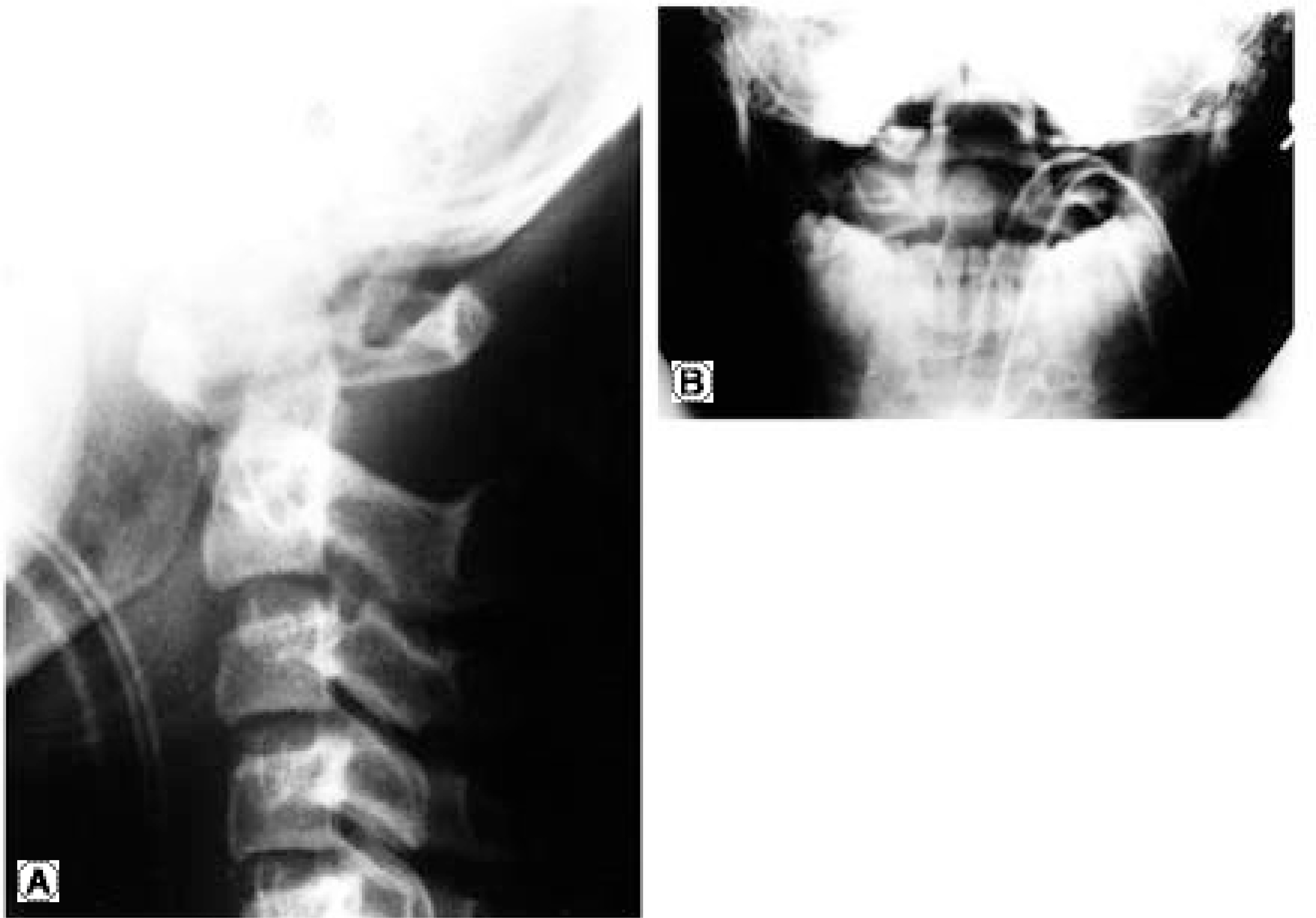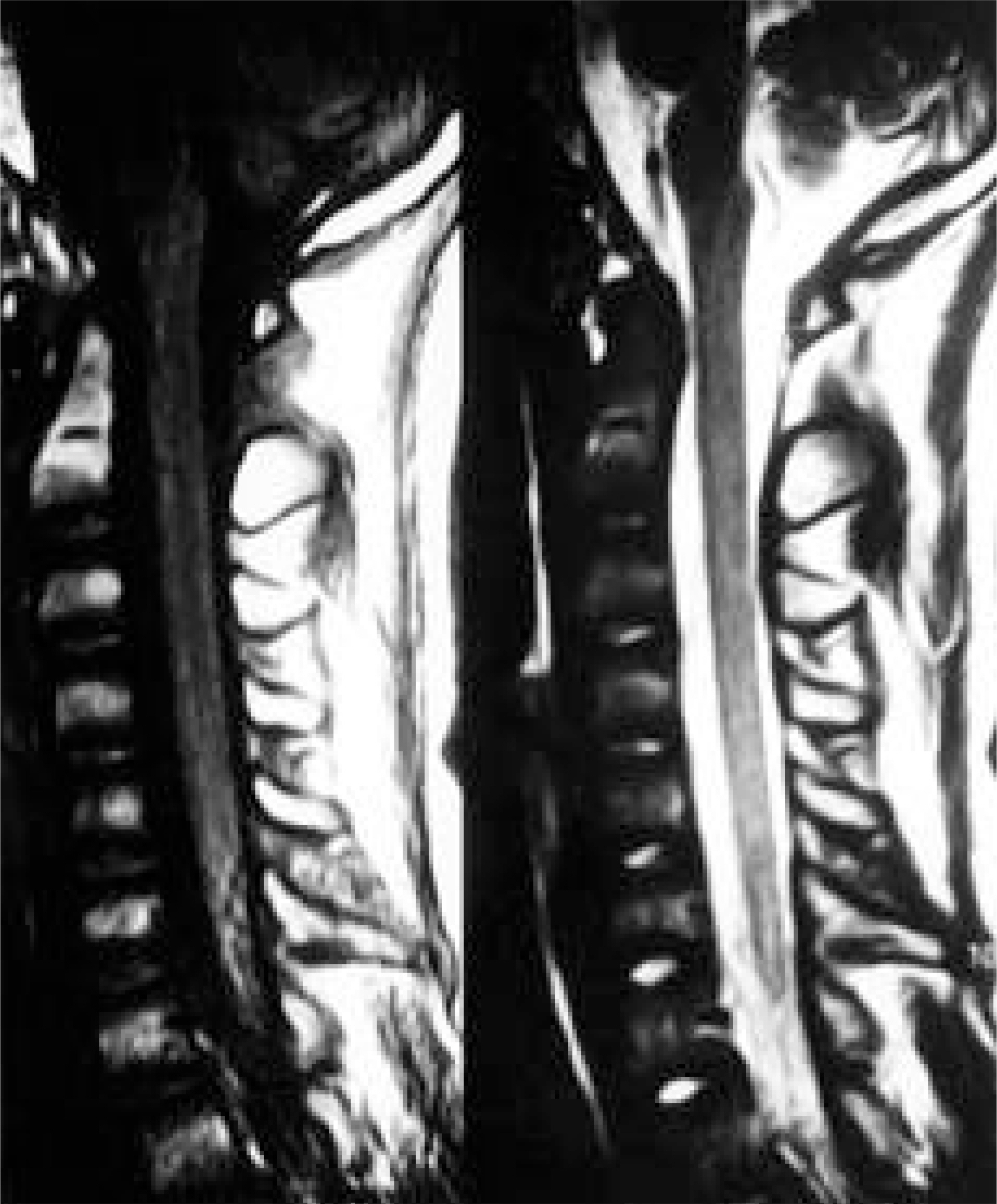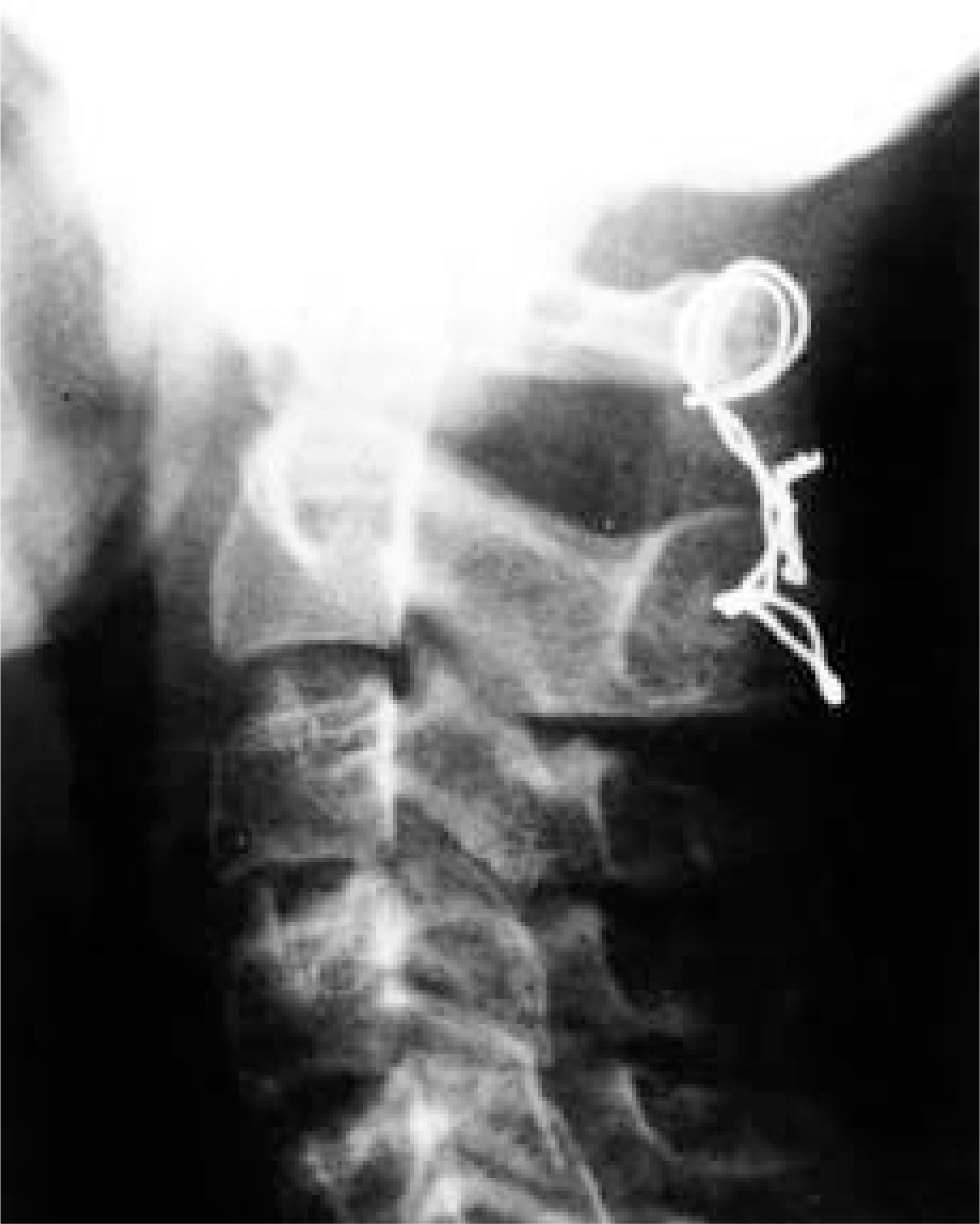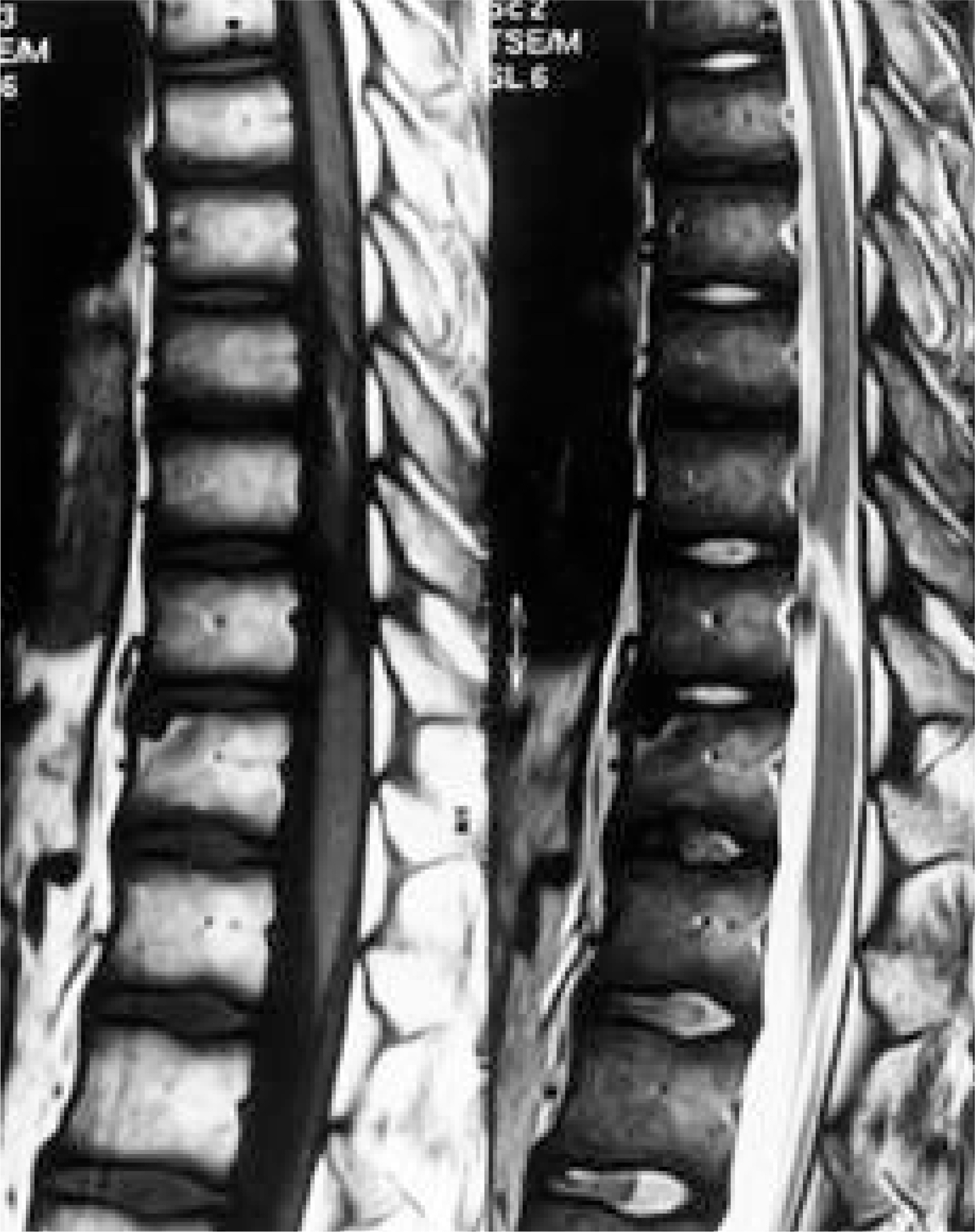J Korean Soc Spine Surg.
2005 Jun;12(2):153-157. 10.4184/jkss.2005.12.2.153.
Distractive Atlantoaixial Dislocation
- Affiliations
-
- 1Department of Orthopaedic Surgery, Wonju Collage of Medicine, Yonsei University, Wonju, Korea. par73@wonju.yonsei.ac.kr
- KMID: 1583460
- DOI: http://doi.org/10.4184/jkss.2005.12.2.153
Abstract
- Atlantoaxial dislocations usually present with fatal brain injury, but rarely with clinical problems. With the development of newer imaging techniques, as well as improved preoperative and perioperative care, the likelihood of survival from an atlantoaxial dislocation has increased. Survivors usually suffer incomplete neurological deficits, including Brown-Sequard syndrome or central cord syndrome. The authors describe a distractive atlantoaxial dislocation, with neurological sequelae, in a younger patient who had been involved in a car accident. This case was treated surgically, but the patient suffered paraplegia due to thoracic myelopathy.
MeSH Terms
Figure
Reference
-
1). Jonsson H Jr, Bring G, Rauschning W, Sahlstedt B. Hidden cervical spine injuries in traffic accident victims with skull fractures. J Spinal Disord. 1991; 4:251–263.2). Matava MJ, Whitesides TE Jr, Davis PC. Tr aum ati c atlanto-occipital dislocation with survival. Spine. 1993; 18:1897–1903.3). Dickman CA, Papadopoulos SM, Sonntag VK, Spetzler RF, Rekate HL, Drabier J. Tramatic occipitoatlantal dislocations. J Spinal Disord. 1993; 6:300–313.4). DiBenedetto T, Lee CK. Traumatic atlanto-occiptital instability: a case report with follow-up and a new diagnostic technique. Spine. 1990; 15:595–597.5). Eismont FJ, Bohlman HH. Posterior atlanto-occipital dislocation with fractures of the atlas and odontoid process. J Bone Joint Surg Am. 1978; 60:397–399.
Article6). Montane I, Eismont FJ, Green BA. Traumatic occipitoatlantal dislocation. Spine. 1991; 16:112–116.
Article7). Page CP, Story JL, Wissinger JP, Branch CL. Traumatic atlanto-occipital dislocation: case report. J Neurosurg. 1973; 39:394–397.8). Traynelis VC, Marano GD, Dunker RO, Kaufman HH. Traumatic atlanto-occipital dislocation: case report. J Neurosurg. 1986; 65:863–870.9). Bucholz RW, Burkhead WZ. The pathological anatomy of fatal atlanto-occipital dislocations. J Bone Joint Surg Am. 1979; 61:248–250.
Article10). Dublin AB, Marks WM, Weinetock D, Newton TH. Traumatic dislocation of the atlanto-occipital articulation (AOA) with short term survival. J Neuro surg. 1980; 52:541–546.11). Levine AM, Edwards CC. Treatment of injuries in C1-C2 complex. Orthop Clin North Am. 1986; 17:31–44.12). Ramare S, Lazennec JY, Camelot C, Saillant G, Hansen S, Trabelsi R. Vertical atlantoaxial dislocation. J Eur Spine. 1999; 8:241–243.
- Full Text Links
- Actions
-
Cited
- CITED
-
- Close
- Share
- Similar articles
-
- Treatment of Distractive Flexion Injury in Lower Cervical Spine using Anterior Cervical Fusion
- Availability of Anterior Cervical Plating According to the Severity of Injury in Distractive Flexion Injury in Lower Cervical Spine
- Delayed Diagnosed Stage 1, 2 Distractive Flexion Injury of the Cervical Spine
- Airway Compression as a Result of Extensive Prevertebral Hematoma Following Extension Injury of Lower Cervical Spine without Fracture/Dislocation
- Risk Factors for Reduction of Facet Joint Dislocation by Preoperative Traction in Distractive-Flexion Injury of the Lower Cervical Spine





